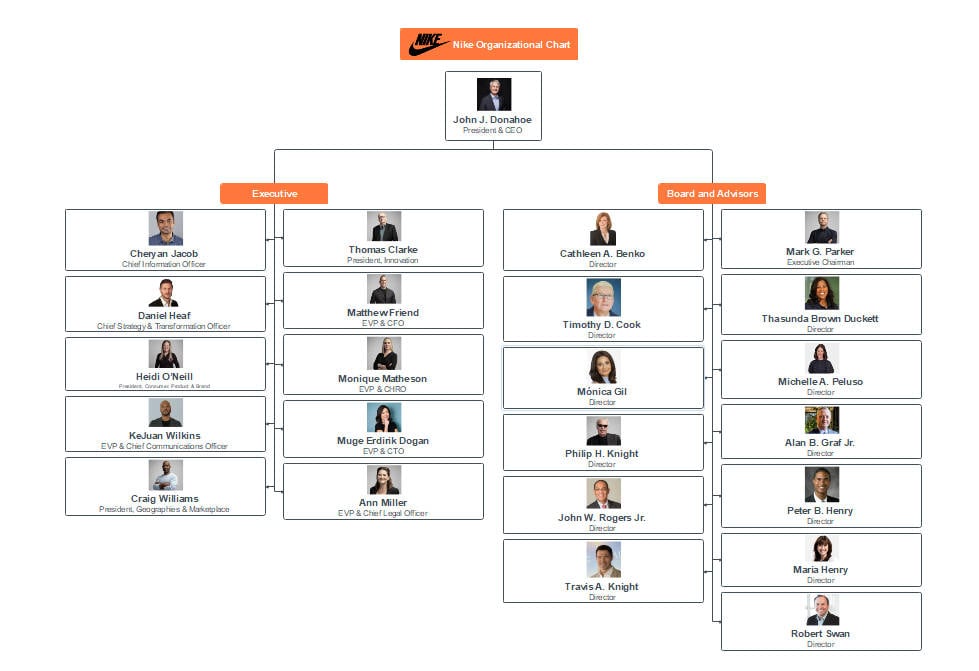Founded by Bill Bowerman and Phil Knight, Nike needs little introduction. It is undoubtedly a global leader in athletic footwear, apparel, and equipment. The company has achieved worldwide recognition while maintaining its internal hierarchy and functional management structure.
Over the years, the organizational structure of Nike company has incorporated flexibility in the wake of regional expansion. Today, it is present in 170 countries across the regional and sub-regional divisions. Hence, every startup and business enthusiast aims to mimic its organizational culture. Want to know more? Let us visualize Nike Company's organizational structure in one diagram.
In this article
Nike's Organizational Structure
Nike's organizational structure follows a matrix chart approach, which divides authority horizontally and vertically.
A matrix company structure is followed by many big companies. It's not the traditional hierarchical structure. Employees can report to multiple supervisors, normally one functional and one project manager. It's more efficient and reduces management issues.
Note:
If you want to start a company, a matrix structure is a good option. You can read the following article for more details
The company follows a regionalized business strategy. It focuses on meeting market-specific apparel, footwear, and equipment demand. Additionally, it has helped Nike maximize transparency and promote bureaucracy among employees and regional divisions.
Let us break down the Nike company organizational structure into executive operations, regional divisions, and subsidiaries.
Executive Hierarchy
The executive team at Nike is versatile.
It possesses experience across industries, including PR, technology, HR, and diversity. The global decision-making team oversees all regional and worldwide operations. Here is a breakdown of Nike's global executive authorities.
- President and CEO of Nike: John Donahoe supervises the company's global business portfolio. He also handles the subsidiary's (Jordon, Converse) operations worldwide.
- Global Marketing Operations: Dirk-Jan Va Hameren has run Nike's worldwide marketing operations since 2018. He has led award-winning campaigns like “Dream Crazy” and “Just Do It”.
- Global HR Operations: Monique Matheson is Nike's Executive Vice President and Chief HR Officer. She oversees the company's core values, including talent management, diversity, and inclusion.
- Global Design Operations: John Hoke is currently the Chief Design Officer at Nike. He leads over 1000 designers, inspiring innovative apparel and footwear designs annually.
- Nike Creative Operations: Thomas Clarke currently controls Nike's Innovation Team. He assumes bringing innovation to the company's core businesses (footwear, apparel, and equipment).
- Global Legal Operations: Ann Miller has been serving as the Chief Legal Officer at Nike Inc. since 2007. She handles the company's legal and public affairs, social community impact, and resilience matters.
- Global Financial Operations: Mathew Friend takes charge of the company's finances, supply and demand, and procurement.
- Global Supply Chain/ Logistics Operations: Craig Williams leads the supply chain and logistics operations across the four regional divisions at Nike.
- Jorge Casimiro serves the Nike Foundation & VP's president and chief Public Policy & Social Impact Officer.
Tip: All names and positions are from Nike's Leadership introduction. Also, this article was written and updated in Sept 2024. There may be changes for their leader team. Find the latest details in Nike Official.
Regional Divisions
Nike's global structure is further broken down into geographic areas. These regional divisions are semi-autonomous, meaning they can make local market decisions. The global headquarters oversees the legal, marketing, financial, and accounting.
The company specializes in four popular regions: North America, Greater China, EMEA (Europe, Middle East, Africa), and APLA (Asia-Pacific, Latin, and America). Each region optimizes in the market-specific shoes, equipment, and apparel market. The company further segmented the geographies and incorporated sub-regions after the Beijing Olympics 2022 to boost sales.
- North America
- Western Europe
- Central & Eastern Europe
- Greater China
- Japan
- Emerging Markets
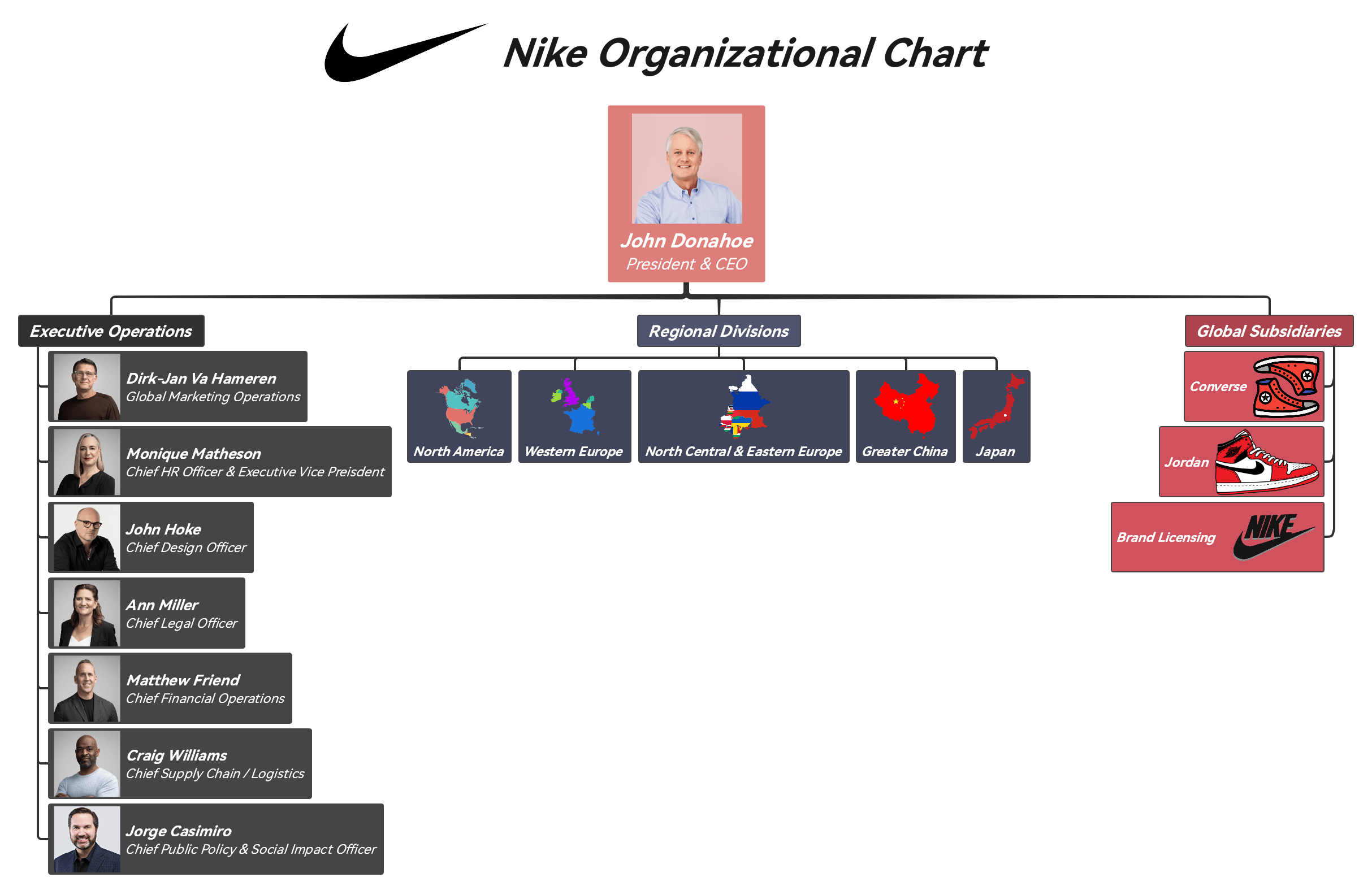
Subsidiaries
Nike's org chart also has several global subsidiaries under the Nike trademark: Converse, Jordan, and Hurley. These subsidiary brands oversee the product-specific design, development, distribution, and marketing.
Key Features of Nike's Organizational Structure
The organizational structure of Nike company reflects its different product lines and worldwide presence. Here are the key characteristics that have helped Nike to cater to the market dynamics.
1. Corporate Leadership
The Nike company's organizational structure starts from an executive leadership team at the top. This team manages the company's strategic direction and oversees its global operations.
2. Global Functions
Nike's Oregon headquarters manages global functions and supports all business segments, including corporate, Nike Brand, and regional divisions. Some key functions are Global Finance, Global Supply Chain, Global administration, Global Marketing, etc. A global chief officer runs each functional unit.
3. Business Segments
Nike has divided its businesses into major segments. Each segment is responsible for managing the manufacturing, distribution, marketing, etc. of relevant products. The company's primary business segments include
- Nike Brand designs, distributes, and markets Nike's footwear, apparel, and equipment.
- Converse, a subsidiary of Nike, oversees the design and marketing of Converse footwear and apparel.
- Jordan, overseeing the global marketing, design, and distribution of Air Jordan athletic footwear (mainly basketball).
4. Regional Market
As discussed above, Nike specializes in regional markets. Each regional office has a top manager who overlooks the three management functions: apparel, footwear, and equipment. Each function has several departments (Sales, HR, Marketing, R&D, etc.). This flexible divisional structure has enabled Nike to meet market-specific consumer demands.
5. Brand Licensing
Though small, Nike has another global division for brand licensing. The company uses licensing and operates with local businesses to distribute its products internationally. It enables the products to reach local consumers, maximizing the benefits of other brands and Nike's international operations.
Part 3: How to Create an Organizational Chart like Nike
Want to make an organizational structure for your company or assignment? Try EdrawMind. It's a very easy-to-use tool for making organizational charts and many other types of charts and maps. It has a pre-built org chart structure and numerous org chart examples.
Whether you need a structure chart for a company like Nike or a SWOT, Pestle, or mind map, EdrawMind has you covered. Search and browse on its gallery. You will find what you need.
If you'd like to make a brand-new chart or map, no problem. Explore the easy-to-find options and buttons. Add as many branches, topics, and elements to your org chart.
Before you begin, download, install, and launch EdrawMind. Log into your Wondershare account or use a social media account (Facebook, Google, etc) to access the software.
Method 1: Create an Organizational Chart from Scratch
Step 1:
Go to EdrawMind's main menu and hit the Org Chart button to enter the editing panel.
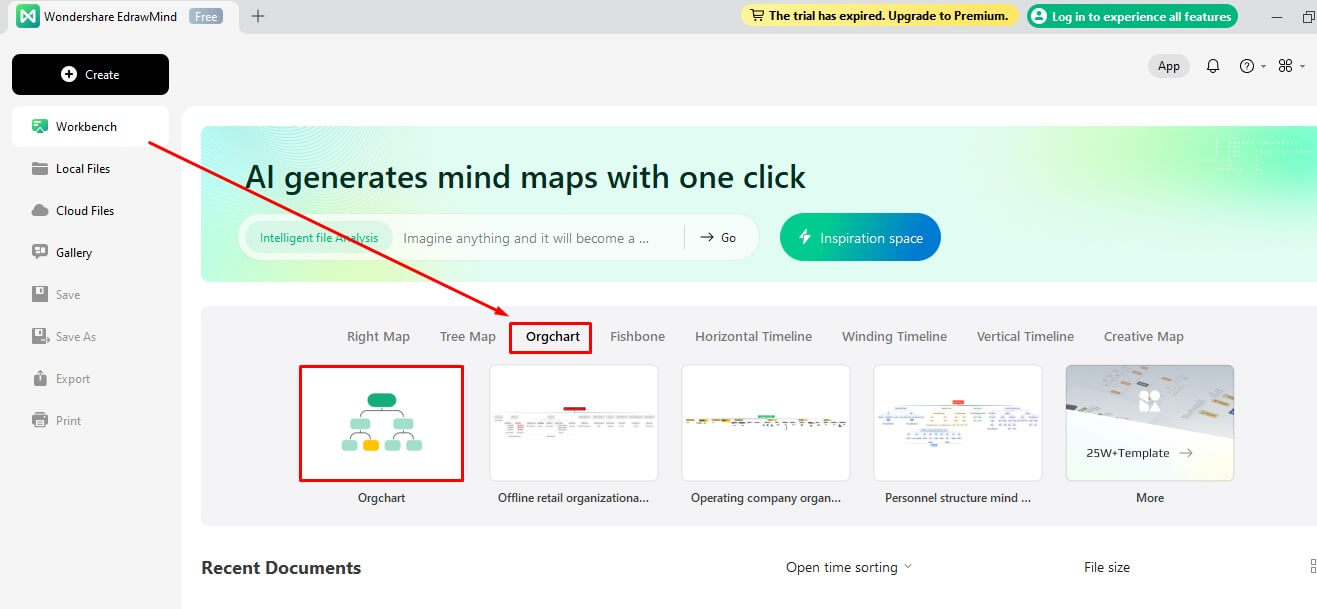
Step 2:
You will see an org chart layout on the canvas. Expand the org structure. Go to the Start tab on the top and click Sub-Topic, Multiple Topics, etc. Or, select the box and click More > Sub-Topic, Multiple Topics.
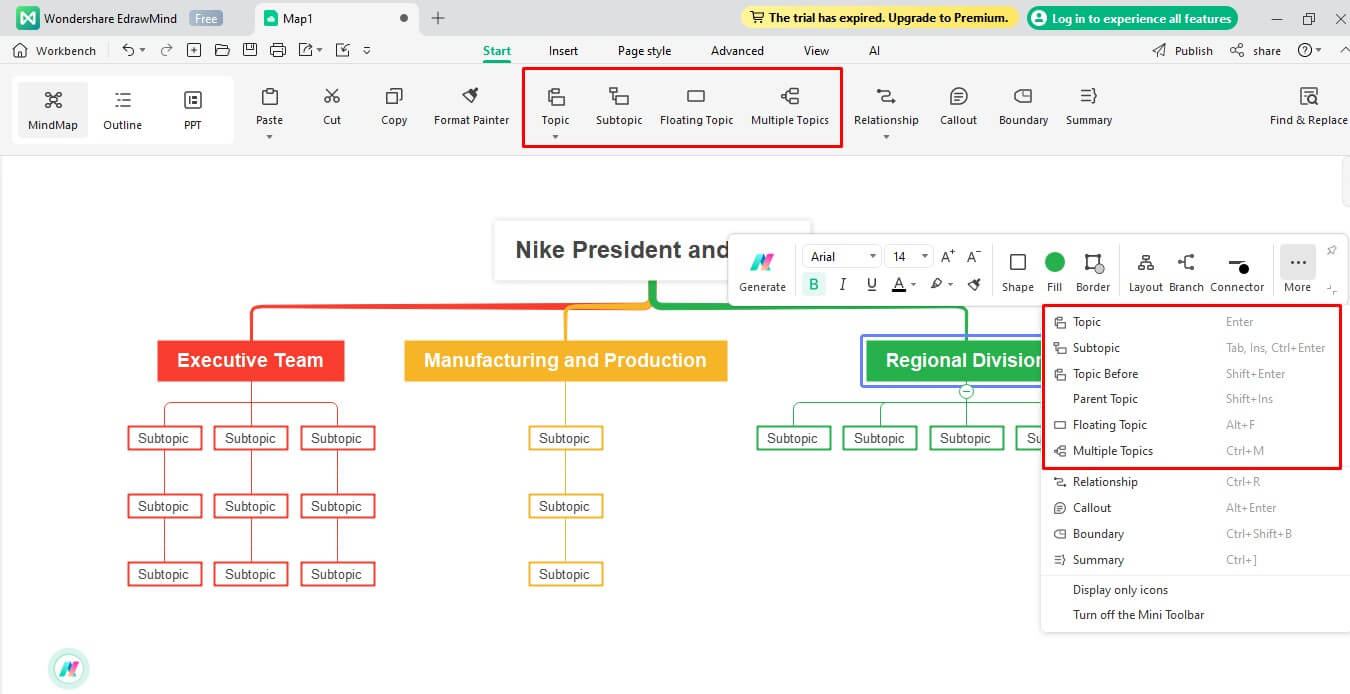
Step 3:
Insert the text in each box by double-clicking it. Next, change the font style and size directly.

Step 4:
Once satisfied with the layout, it is time to add pictures. Go toInsert > Picture. You can browse images from the gallery.

Step 5:
Congratulations, your Nike org chart is ready. But a few colors and the right layout can make it pop. Go to the Page Style tab on the top and change the color theme, layout, and background image.
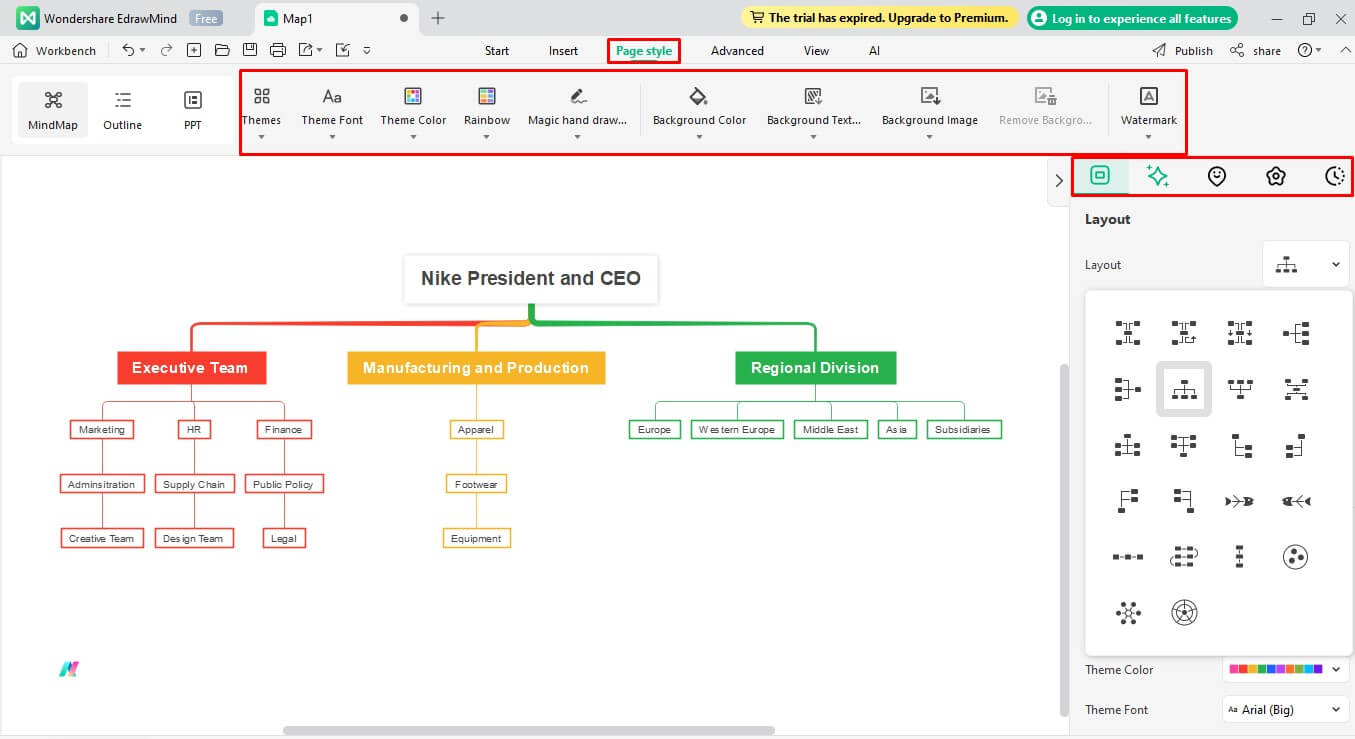
Method 2: Use and edit an organizational Chart Examples
Step 1:
Visit the EdrawMind Template Gallery from the main menu. Click Diagram Type > Org Chart, or type Organizational Chart in the search box. It will display several templates on the screen. Scroll down to find the right match and press Create.
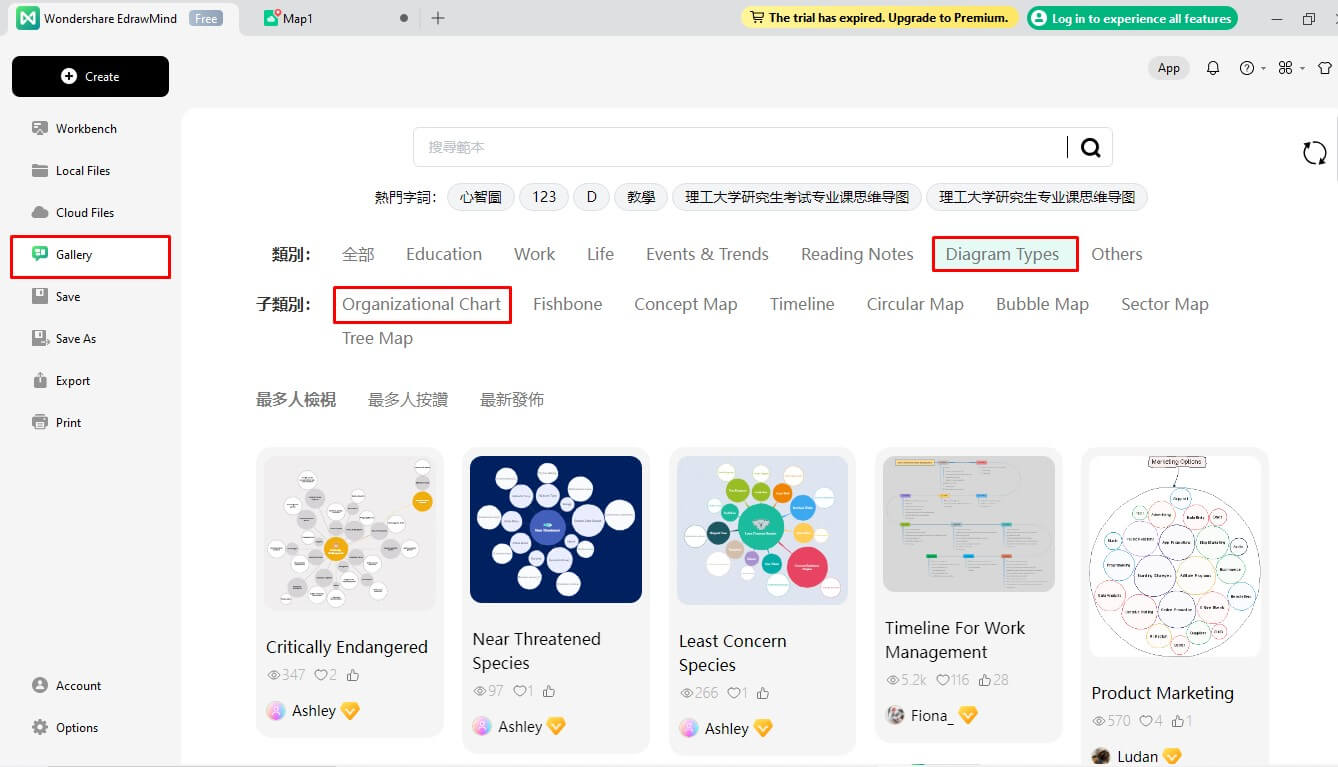
Step 2:
Once on the editing panel, add and remove the topics and sub-topics from the Startbar on the top.
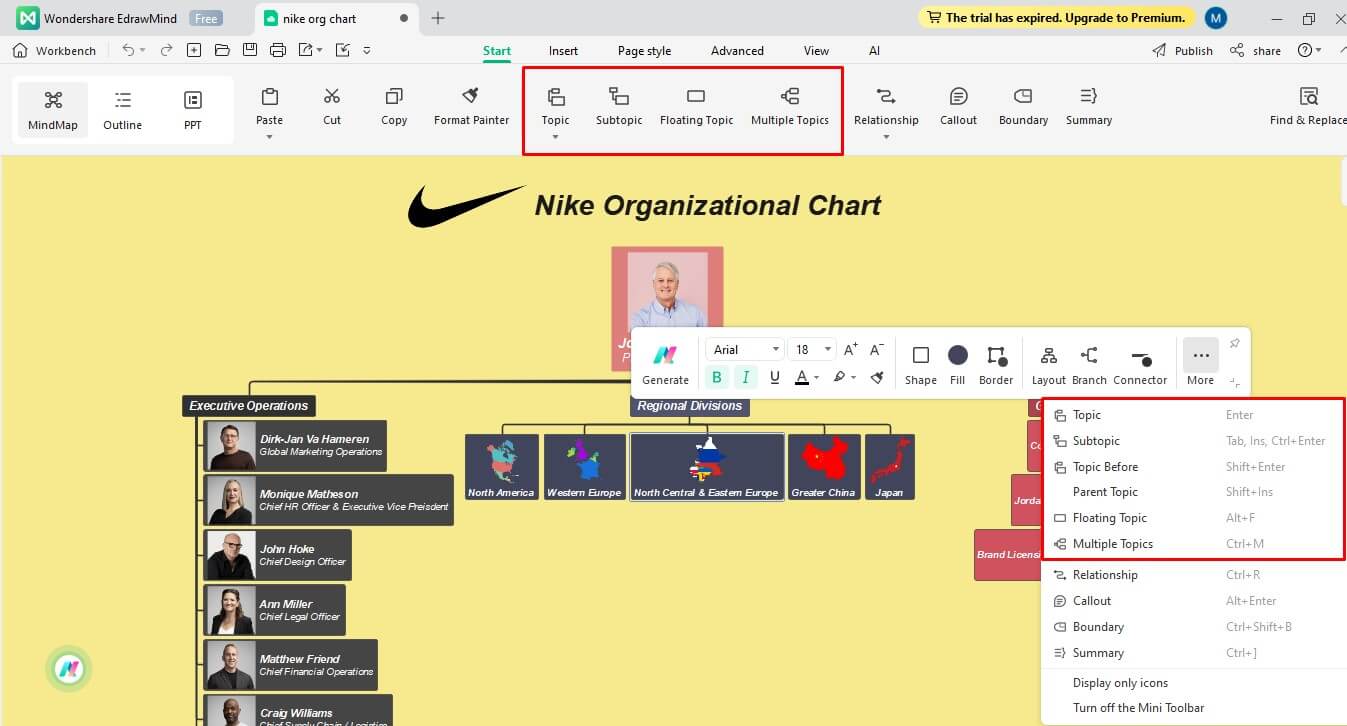
Step 3:
Change the text and replace images in the org chart.

Step 4:
Want to change the color scheme? Go to the Page Style It allows altering the org chart layout and color scheme. Ta-da, the org chart is ready.
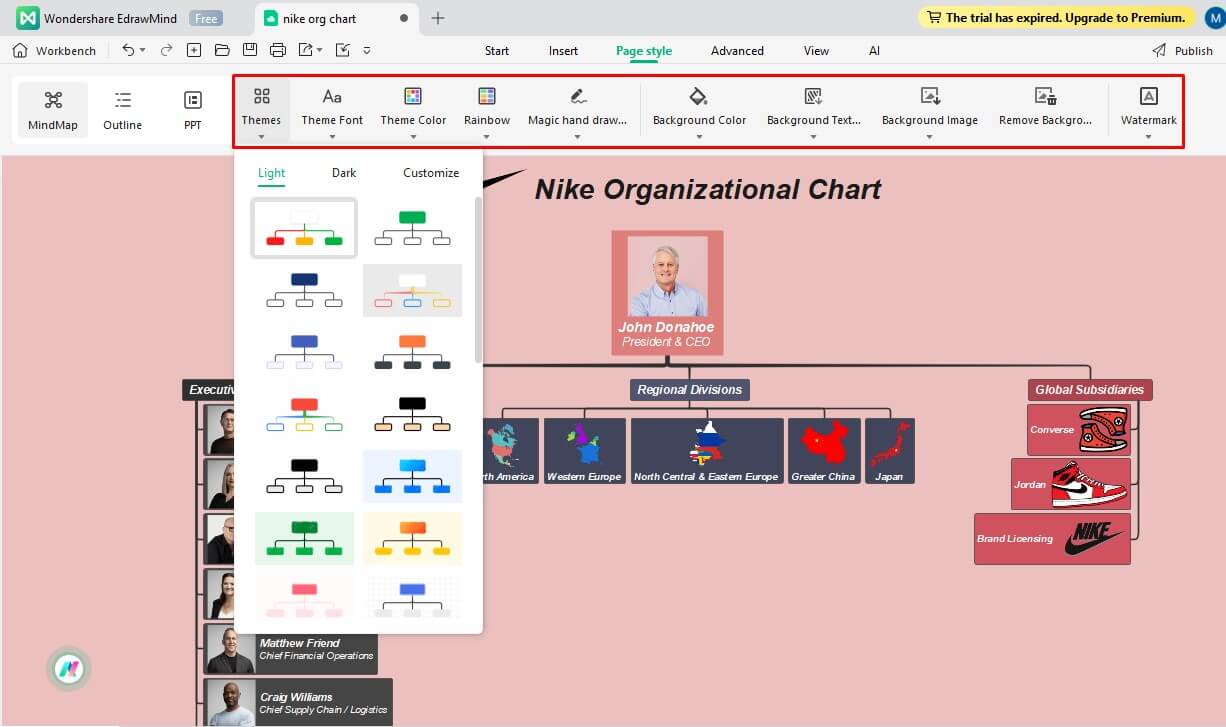
Step 5:
Once satisfied, export the org chart by clicking the Export icon on the quick-access toolbar. It supports various formats: PNG, JPG, PDF, etc.
Or, show it to your social media friends by pressing the Share button on the top-right corner. Edit permissions and paste the link in group chats.

Conclusion
The organizational structure of Nike company reflects its ability to adapt to the local market while maintaining the corporate structure. This structure has enabled the company to venture into regional markets with guaranteed profit. Simply put, it is concise, flexible, and well-put together.
Are you a business student curious about the market giants and their corporate culture? EdrawMind might be a better companion. It has numerous organizational charts of multinational corporations. You can even brainstorm ideas for the next essay with its mind-mapping space. So, visit its template gallery; you might find something useful.



